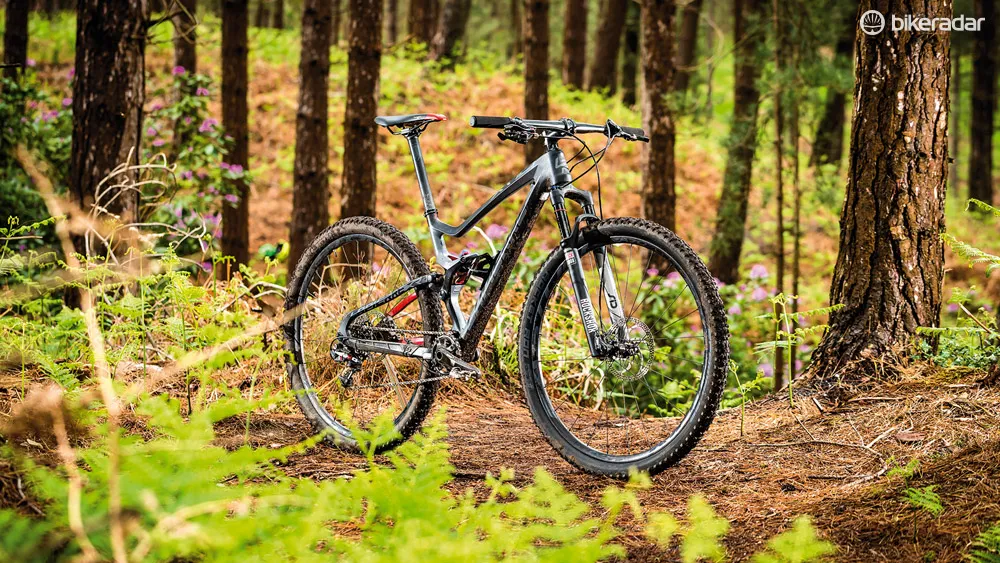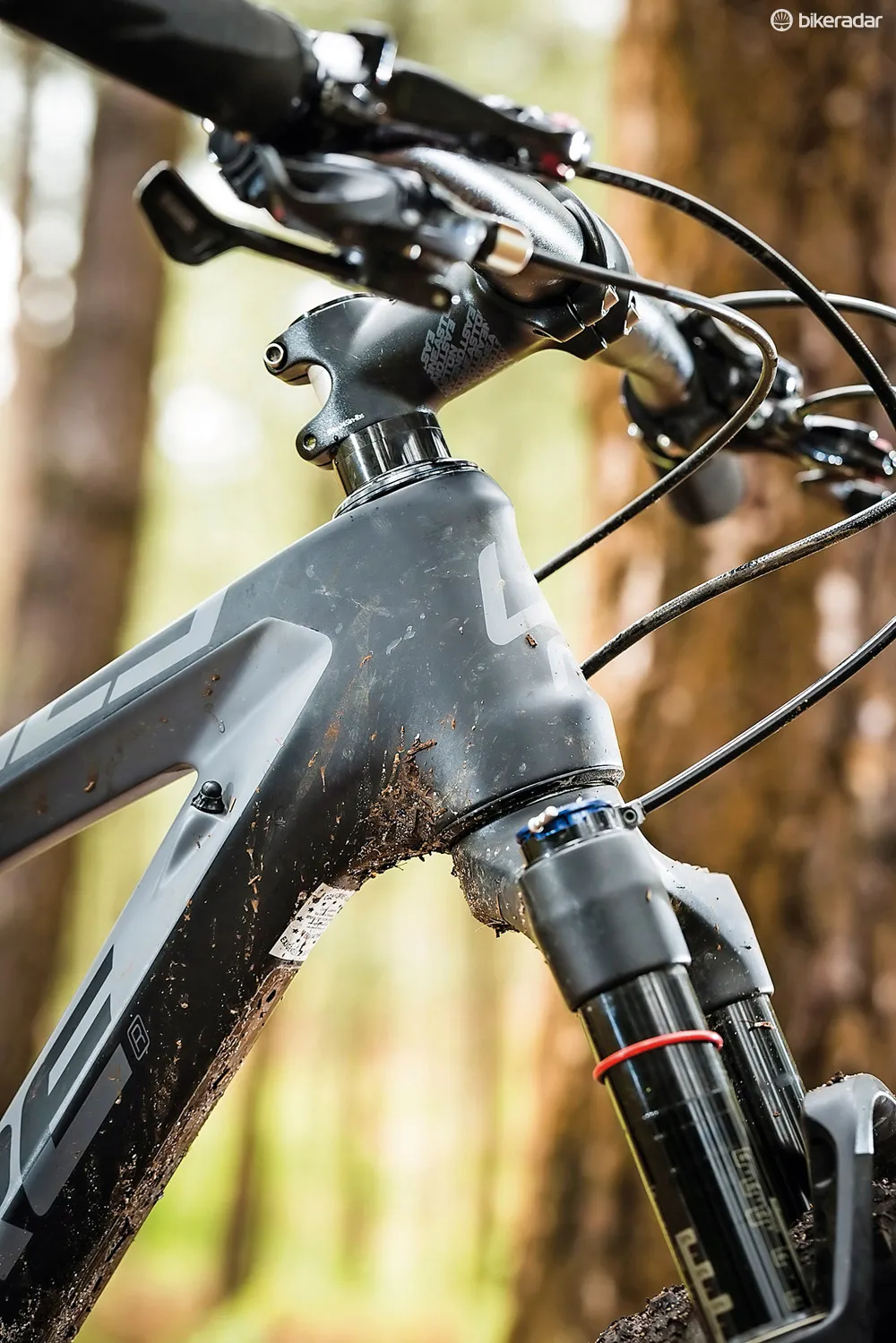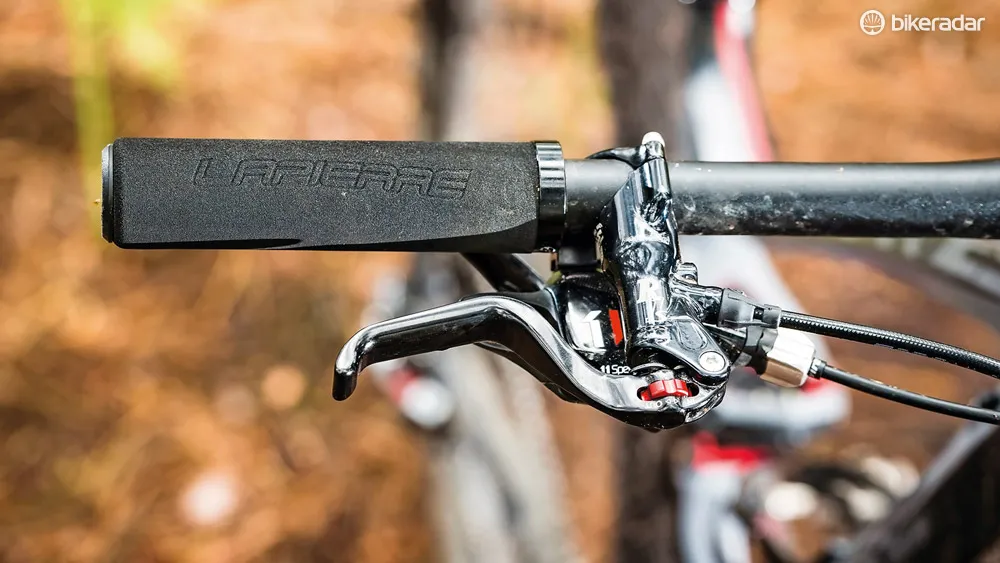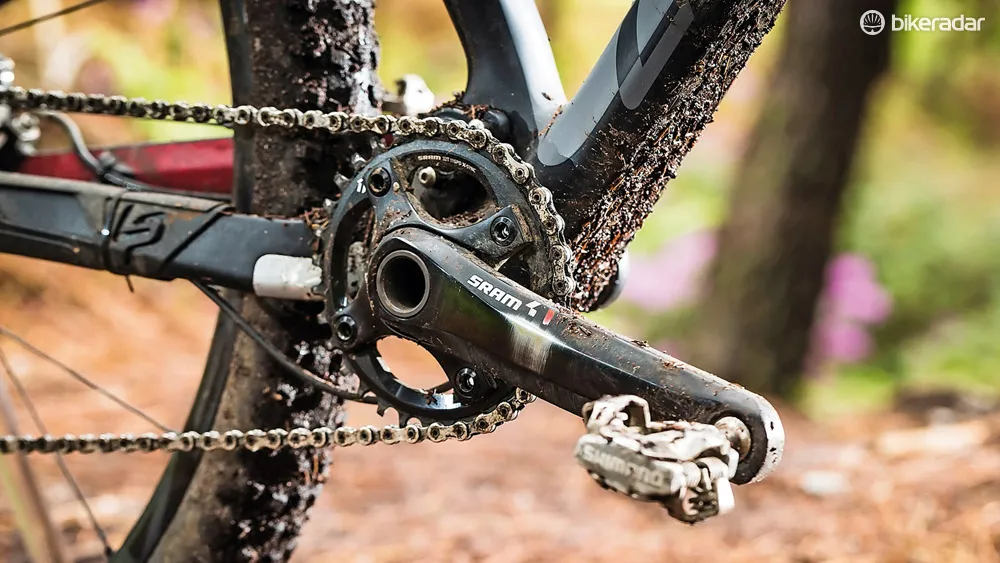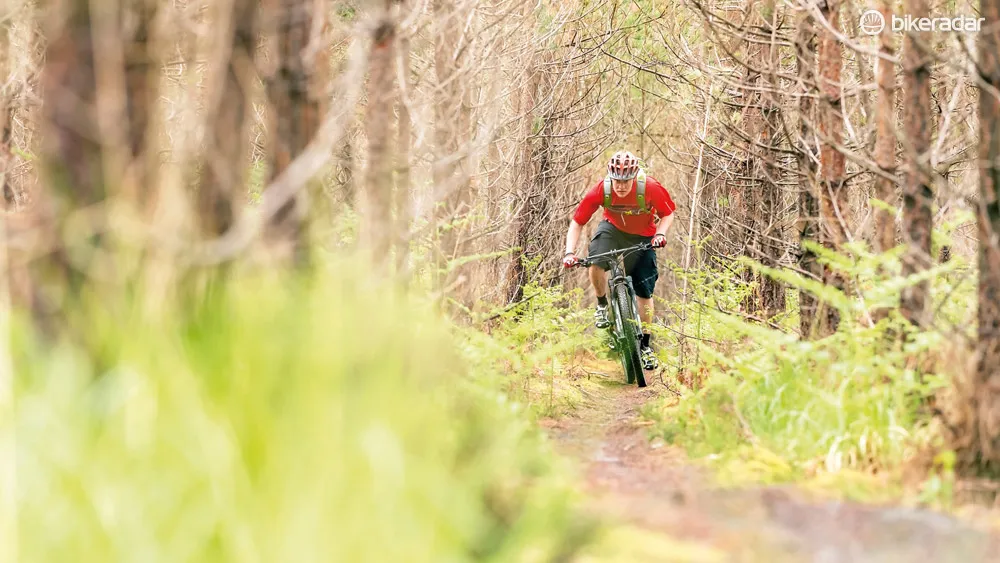The 100mm travel full suspension 29er Lapierre XR range of bikes made its debut last year and was something of an instant – albeit cult – hit among the mountain bike cognoscenti. We loved the one we tested and this year’s version has kept the essentials er, essentially the same, but there are a couple of significant component changes.
Frame and equipment: leave off the 'XC' labels
We were loath to put the label of ‘XC’ on this bike too early in this review – to some of you, seeing that will be an instant turn-off. This bike is a whole load more than just an XC race head machine.
Okay, so it only has 100mm of travel. It does only weigh an amazing/worrying 10.7kg (23.6lb). And yes, that is a RockShox SID fork up front. It’s not just a bike for climbing rapidly up fire roads and around grass fields though. The Lapierre is one of the finest – and funnest – mile-covering bicycles we’ve ever encountered.
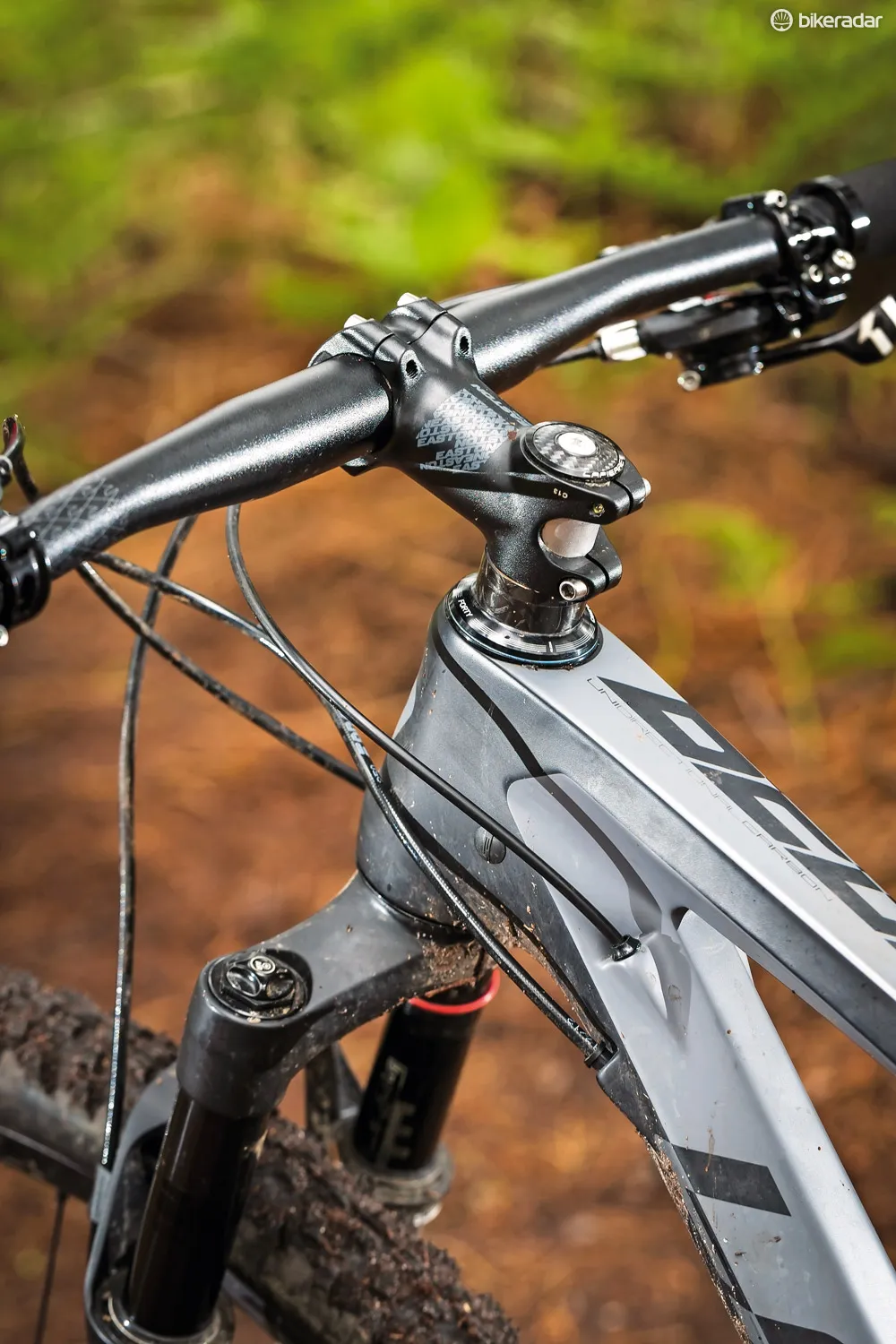
Internal cable routing keeps things looking clean and businesslike
The frame is carbon. The suspension design is a linkage driven single pivot. The designers have dispensed with the usual chainstay pivot near the rear axle found on longer travel Lapierre models – instead the stays on the XR 729 simply ‘flex’ the small but necessary amount.
The linkage and rear shock are positioned midway up the interrupted seat tube. This really limits the seatpost height adjustment (some riders will find they have to cut down the seatpost), and riders who like to lower their saddle for technical trails will have to install a dropper post. In the real world, racers will keep the saddle at full height for everything and everyone else will buy a dropper.
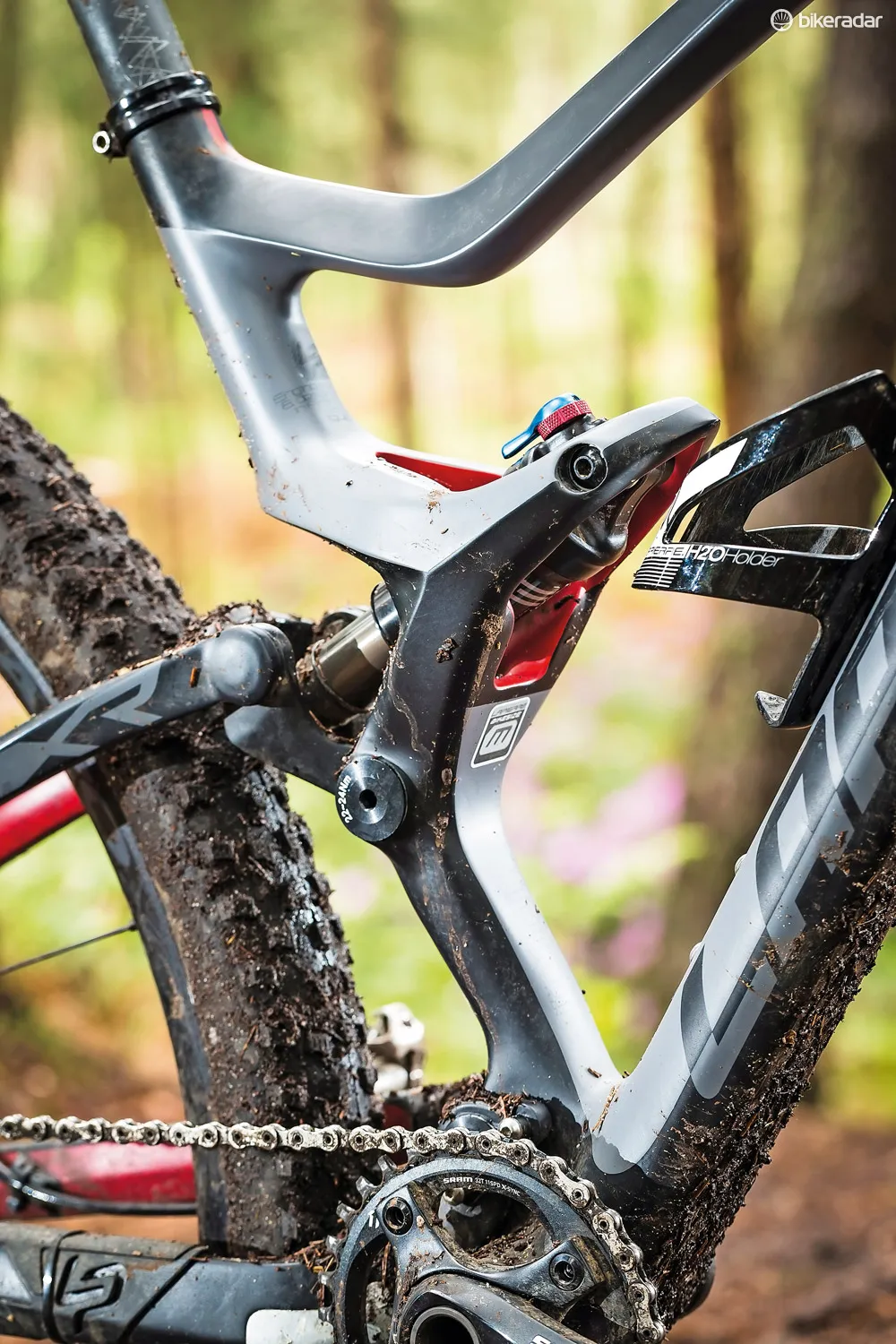
The shock is nestled in a neat cradle, but this does limit post dropping potential
The mid-seat tube location of the Fox Float CTD Evolution SV rear shock does have its benefits, namely the suspension characteristics. For a short travel XC bike the XR 729’s suspension is incredibly active.
On an aesthetic yet functional note, the internal cable routing keeps the lines looking neat and makes the bike simple to clean when it comes back from yet another day-long adventure in the muck. The front derailleur-free SRAM X01 helps here too.
Ride and handling: compression compromises
The XR729 isn't perfect though. In fact it has some slight weaknesses where you’d assume it would have great strengths. But then it excels in loads more areas where you’d think it would flounder. It’s a fascinating bike.
It was during climbing where we experienced some niggles. Somewhat counterintuitively the super active rear suspension caused the rear wheel to spit traction under stomping power on loose terrain. The suspension compressed rather than dug in. It was a rather unexpected aspect but present nonetheless. Switching to a grippier/draggier rear tread or dropping down the psi helped matters.
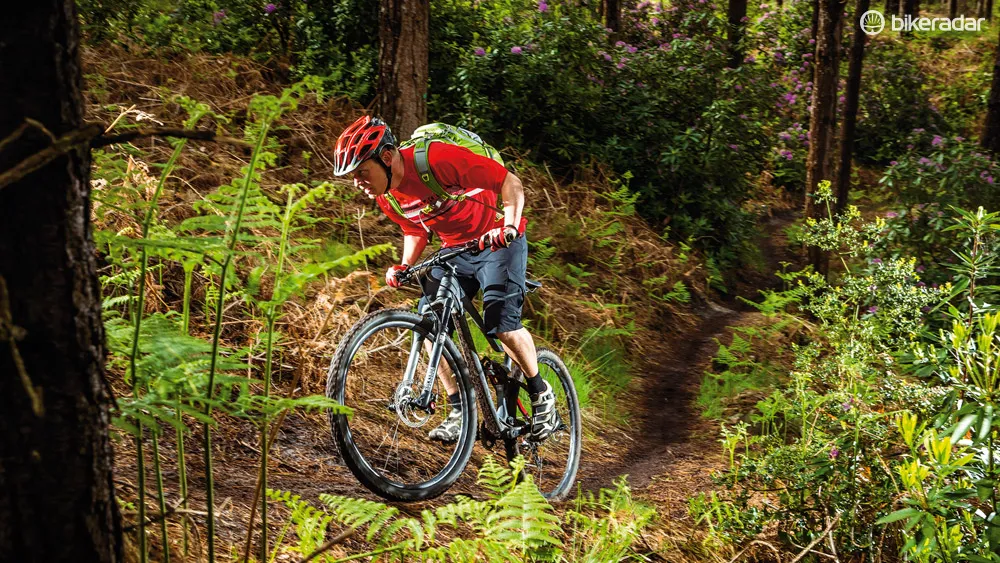
The XR 729 races up hills – though it can lose occasionally lose traction when things get loose…
If you race XC then a firmer compression tune on the rear shock would be a future solution, or you could opt for the pricier intelligent electronic EI model. For regular trail riding, the occasional spit of traction is a price well worth paying for the bike’s performance everywhere else.
When the climbs weren’t loose the XR 729 absolutely shot up hills. It’s hard not to fly uphill on a 29er that weighs less than 11kg (24lb). It made it a fun experience in its own right, and wasn’t just a novelty.
The bike is outrageously capable on descents too. The low-slung stance and punchy suspension feel make for a highly entertaining and involving ride. On paper, the 70-degree head angle sounds steep but, out on the hills and mountains, the bike’s length (600mm effective toptube on a medium), lowness (330mm bottom bracket height) and pleasantly short stem and decent wide 720mm handlebars keep things calm and controlled.
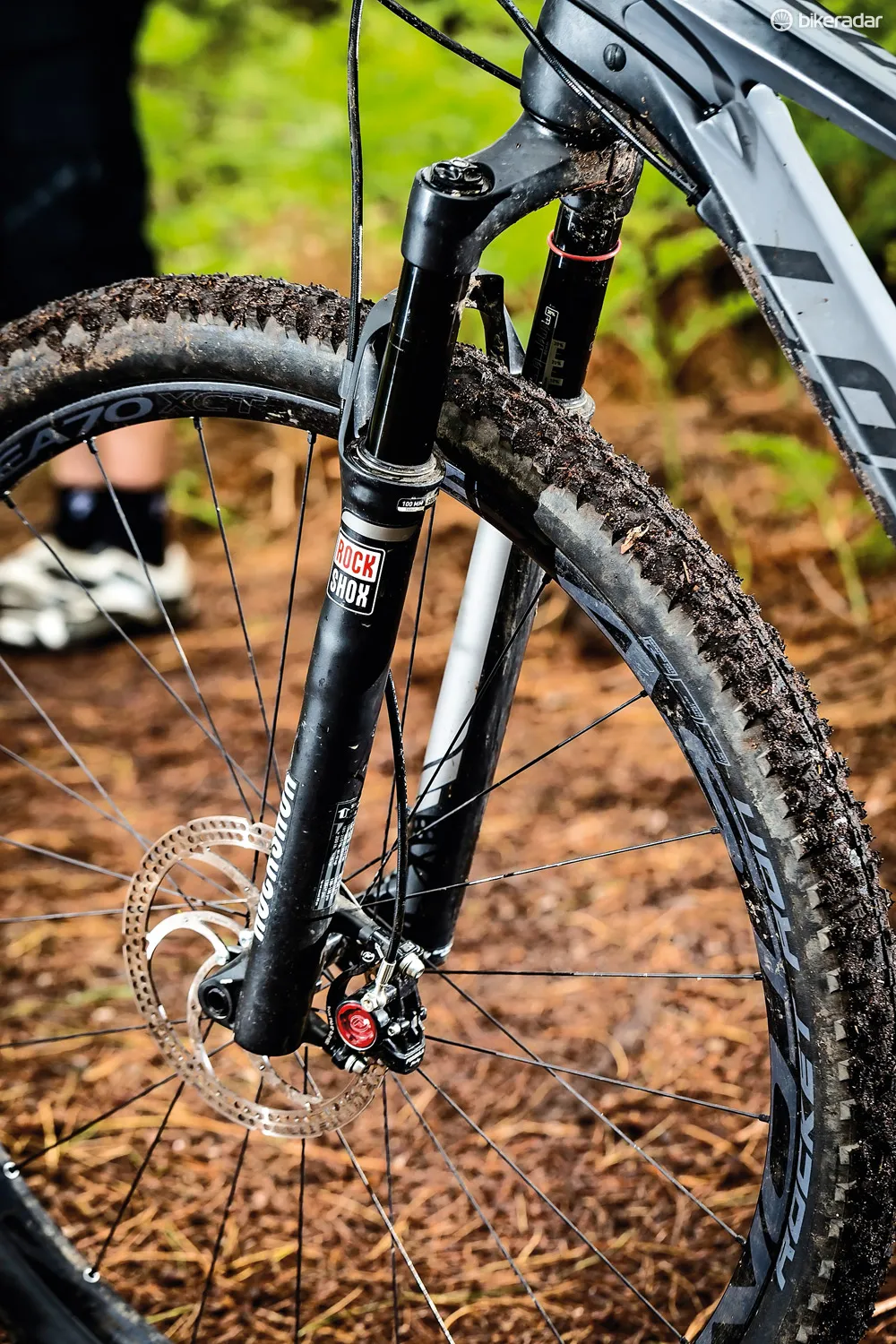
The skinny RockShox SID fork is stiff enough thanks to a 15mm thru-axle
The bolt-thru rear frame, RockShox SID 15QR RL fork and Easton EA70 XCT wheels were impressively stiff and ripe for battering at stuff. The RockShox SID, while not a stout Pike, proved a plucky little number that coped respectably with all that was asked of it.
Undoubtedly the greatest attribute we found with the XR 729 was how it performed on contouring and traversing terrain. It also punches well above its weight when it comes to thundering through rough stuff or pinging through turns.
It hurtled across everywhere and everything with the greatest of ease. Test rides on the XR 729 often ended up being much longer than originally intended – the bike just made it so easy and enjoyable to do ‘just one more hill’, then another, and another.
Even with the single-ring gearing range of the X01, which is broad but not as broad as a middle-plus-granny two-ring setup, we never found ourselves wanting an extra bail out gear. The XR 729 would still happily clamber up the steepest or longest of inclines for hours on end.
Encountering anything twisty and swoopy on the XR 729 was a complete joy. The light weight, the chassis stiffness, the suspension feel, the geometry stance… it all combined perfectly, like an aggressive spring lamb.
Our only real issue was with the Formula R1S disc brakes. They’re lovely to look at and they don’t weigh very much but they’re lacking in top end power compared with rival manufacturers' offerings. They aren’t ‘bad’ brakes per se, it’s just that this bike can go at velocities through rough terrain that call for greater braking power and control.
Indeed, this is an incredibly light and rapid machine. It made us stop and rethink how we’ve ended up limiting short-travel bikes to the realm of Lycra race heads and mild-mannered marathon mile-munchers. We'd happily have the XR 729 as our only mountain bike. Short travel and low weight combined with big wheels and frame stiffness is a winning formula.
